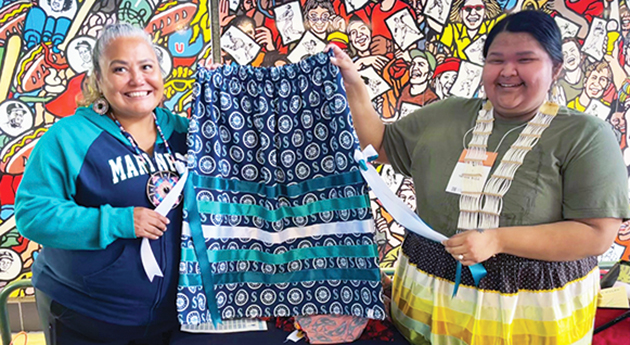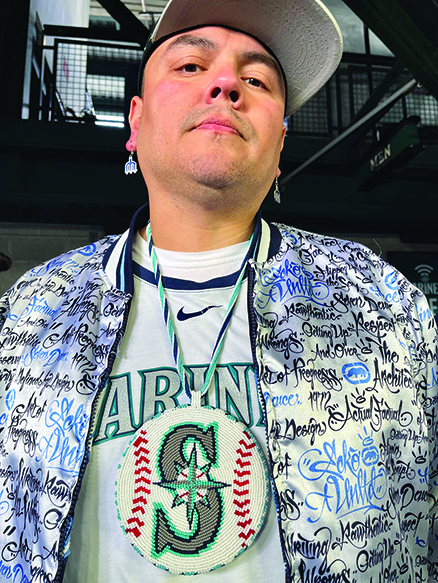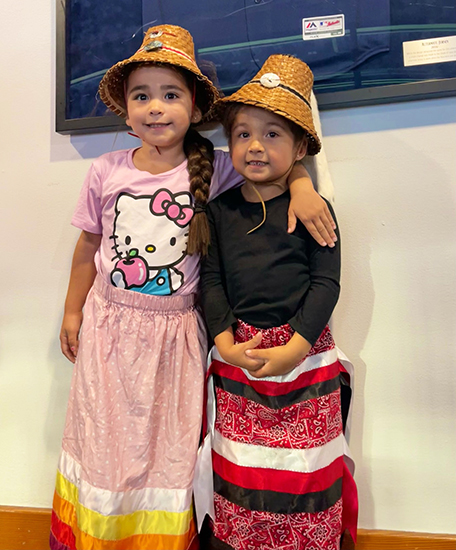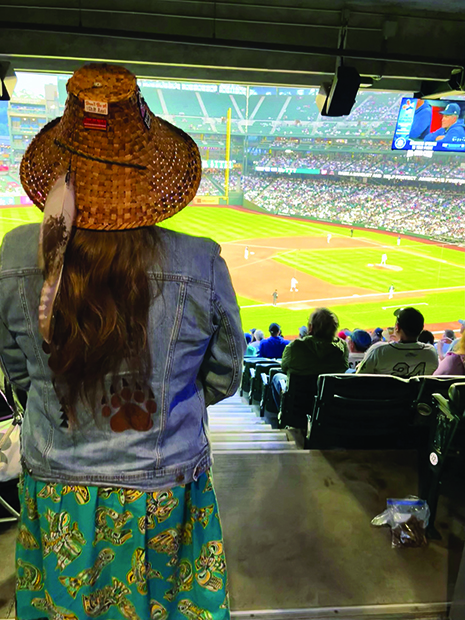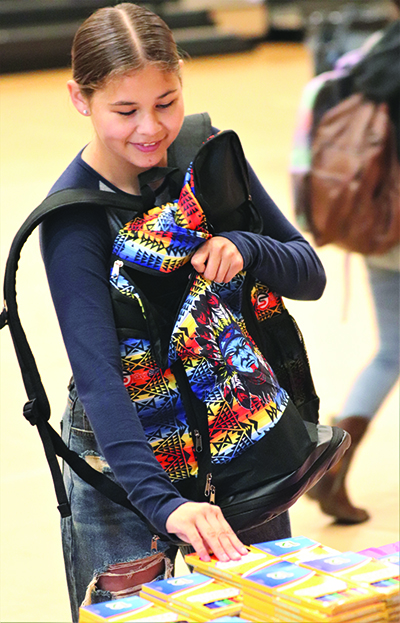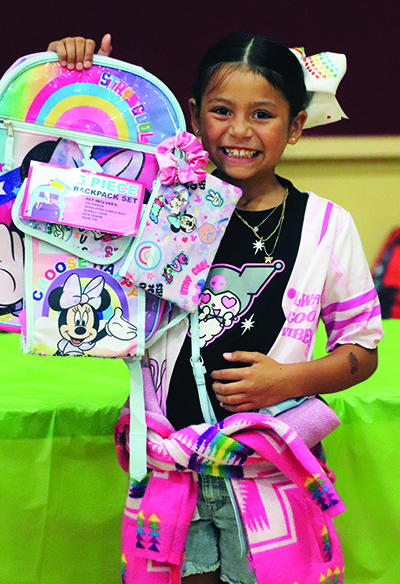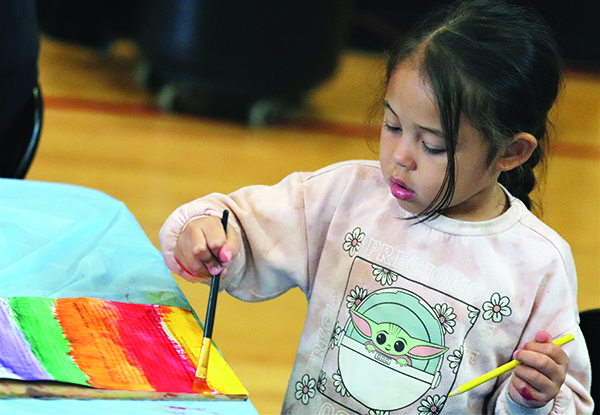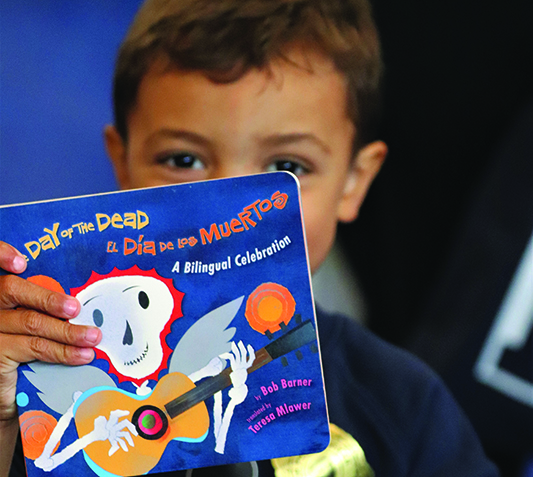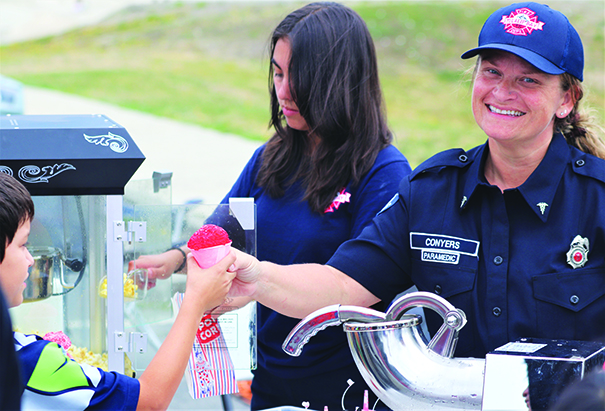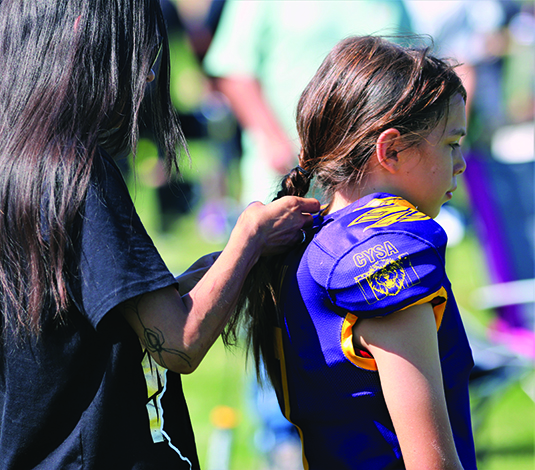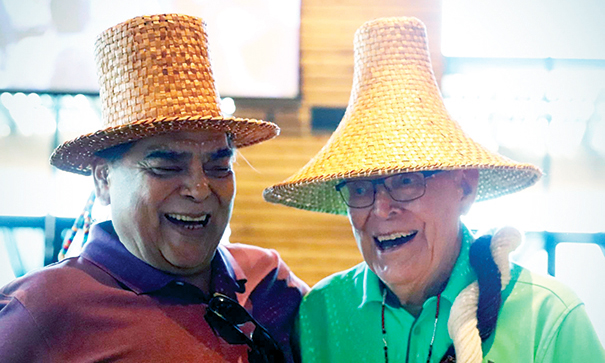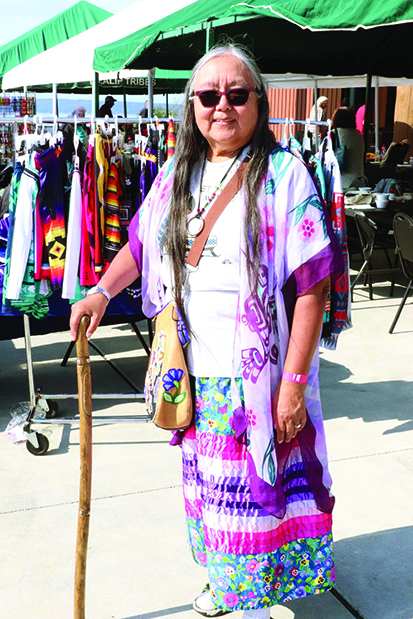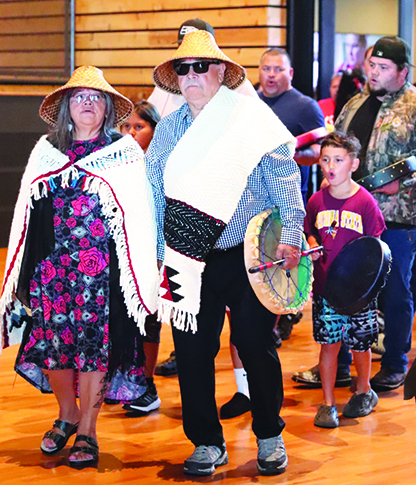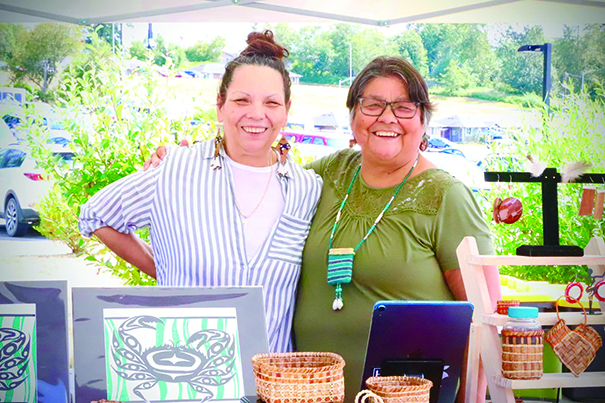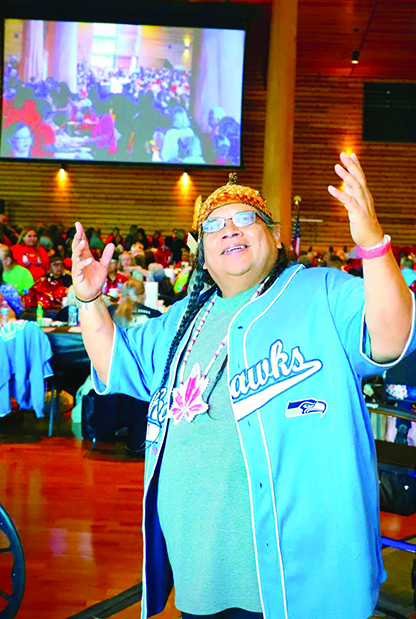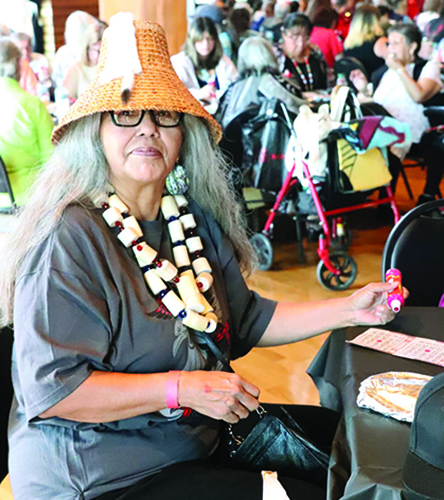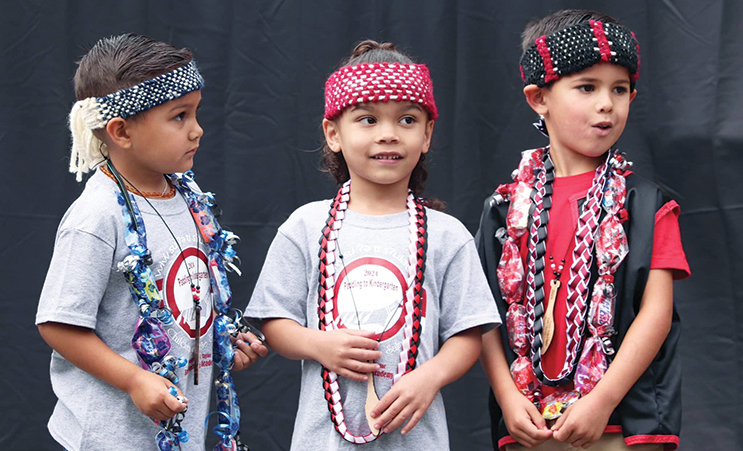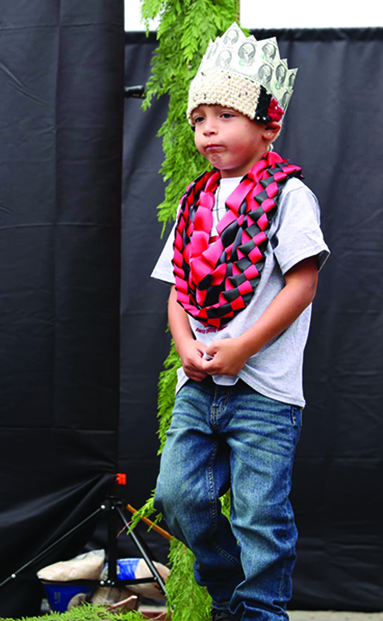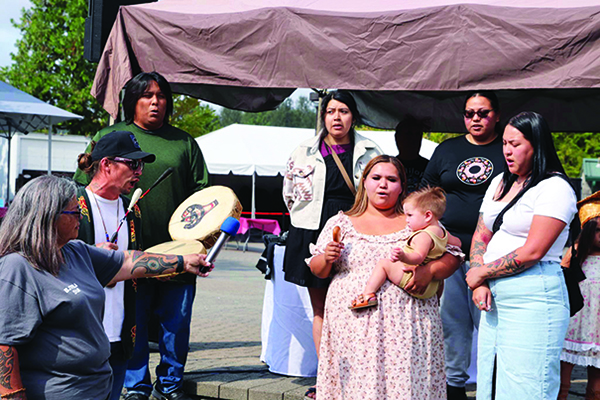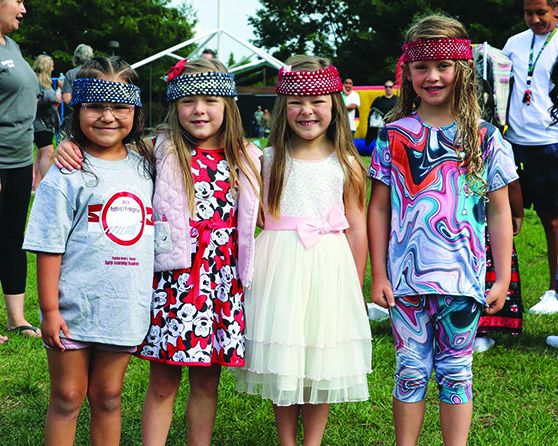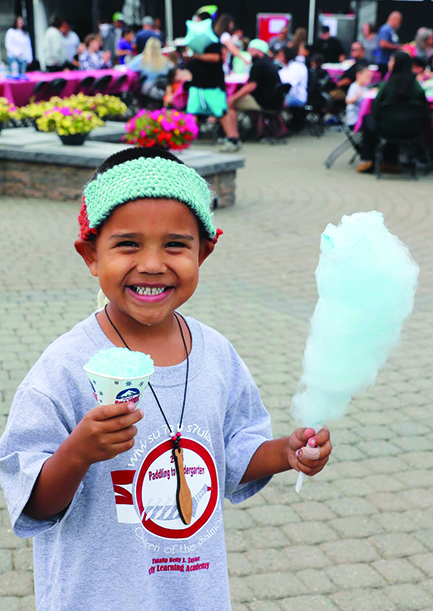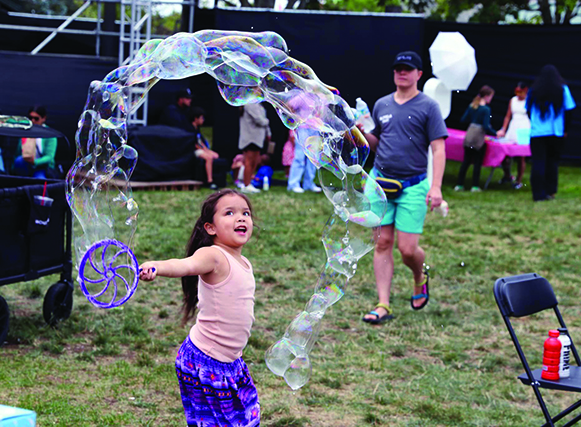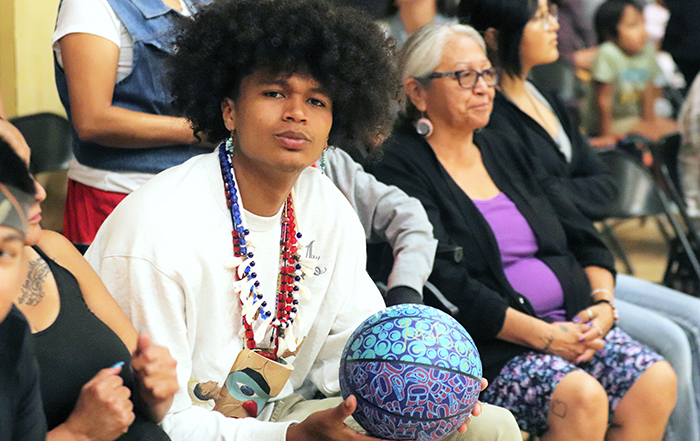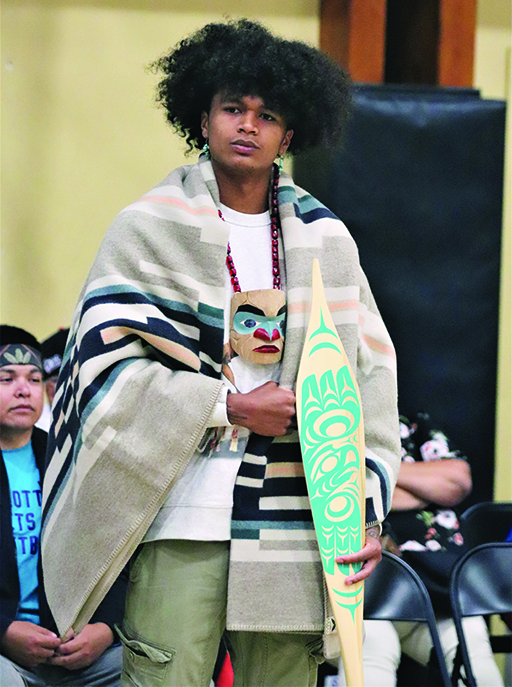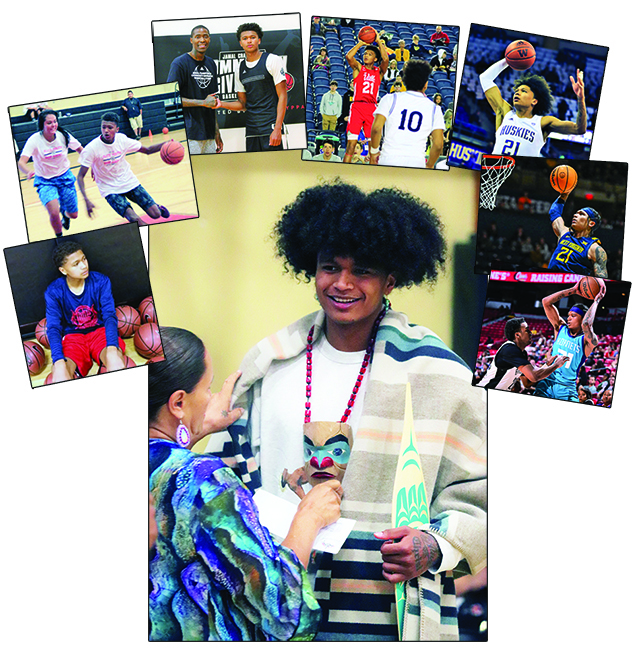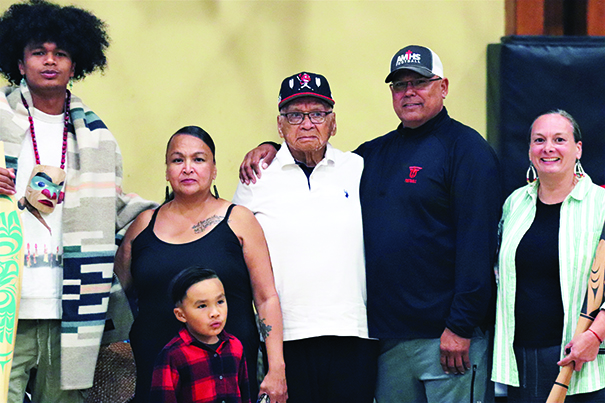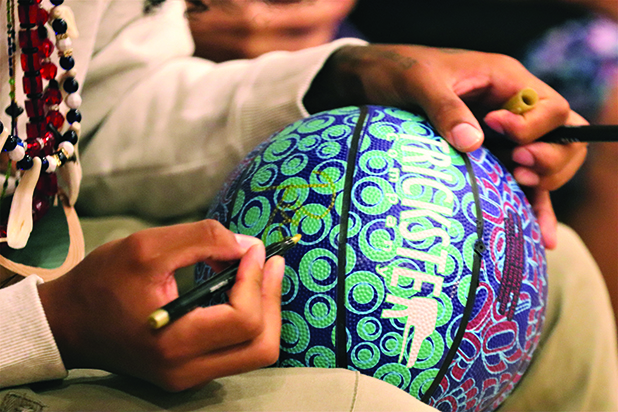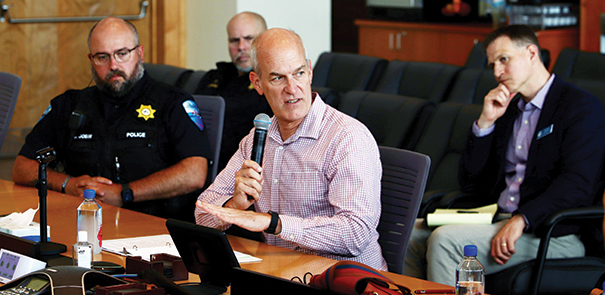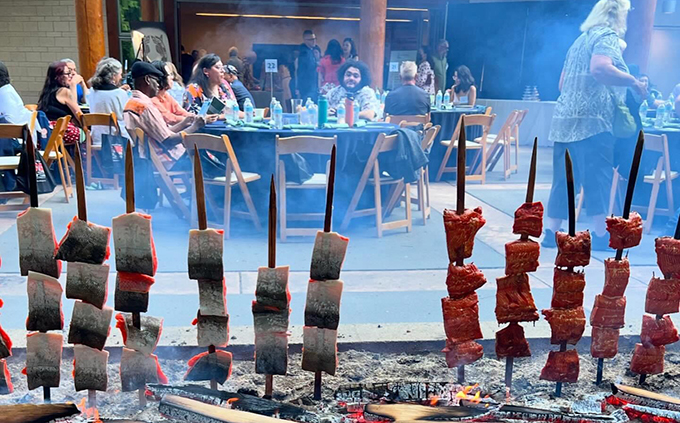
By Kalvin Valdillez, Tulalip News; photos courtesy of Nicole Sieminski, Stephanie Cultee and Tessa Campbell
A record breaking $70,000 was raised during the Tulalip Foundation’s Annual Salmon Bake Fundraiser benefiting the Hibulb Cultural Center. It was the hot ticket event of the summer and sold out during the week leading up to the gathering. Close to 250 people were dressed to the nines on the evening of August 17, as they convened at the cultural center’s terrace where they were greeted by the welcoming aroma of traditional baked salmon.
“Our ultimate goal is to support the cultural center and to feature it’s work and all the good work that it’s doing,” expressed Nicole Sieminski, the Tulalip Foundation’s Executive Director. “It is gratifying to see people’s support and that they keep showing up for us. And we’re grateful that we keep getting new supporters as well. My goal is to keep growing, which we did by a lot. We raised $52,000 last year, which was big because it was the first time we broke $50. And this year we raised $70,000!”
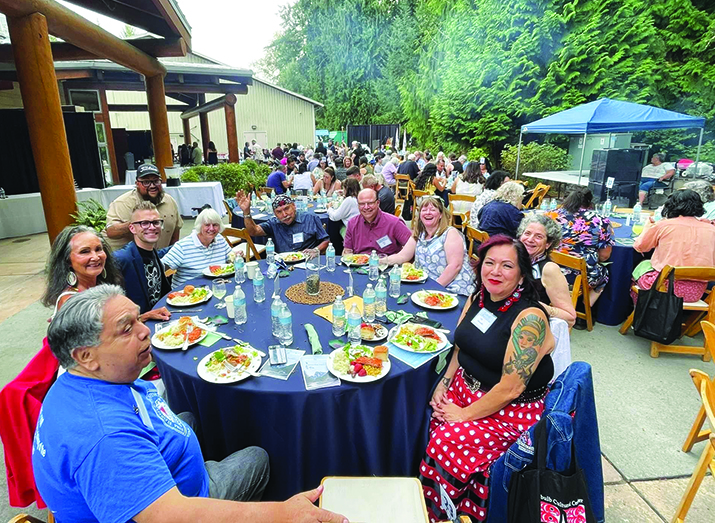
Since its establishment, the Hibulb Cultural Center has imparted a vast amount of knowledge about the Tribe’s history and ancestral teachings to the wider community. With historical artifacts, photos, and documents, the center has provided insight and a tribal perspective on issues such as colonialism and assimilation while simultaneously celebrating the ancestral teachings, values, beliefs, and stories of the Tulalip people.
Many of the cultural center’s gatherings, exhibits, and workshops are possible due in large part to the Tulalip Foundation’s annual salmon bake fundraiser. This is an all-hands-on deck event and is organized not only by the Foundation, but also the team from the cultural center.
The Tulalip Foundation is a non-profit organization that supports tribal programs and projects based on five support areas – culture and natural resources, education and workforce, law and justice, community and development, and health and social. The Foundation has made a great impact on the tribal community and has become well-known throughout the region. Many local companies and nationwide corporations have donated thousands of dollars for the betterment of both Tulalip’s governmental programs, as well as community-led and focused projects.
Making their sixth consecutive return to the event, the Taylor Family once again prepared the salmon over fire. What makes this special is that the people get to see this traditional method of cooking in real time. Attendees witnessed an act of passing knowledge to the next generation, as Lance Taylor guided his grandson Jared throughout the entire process.
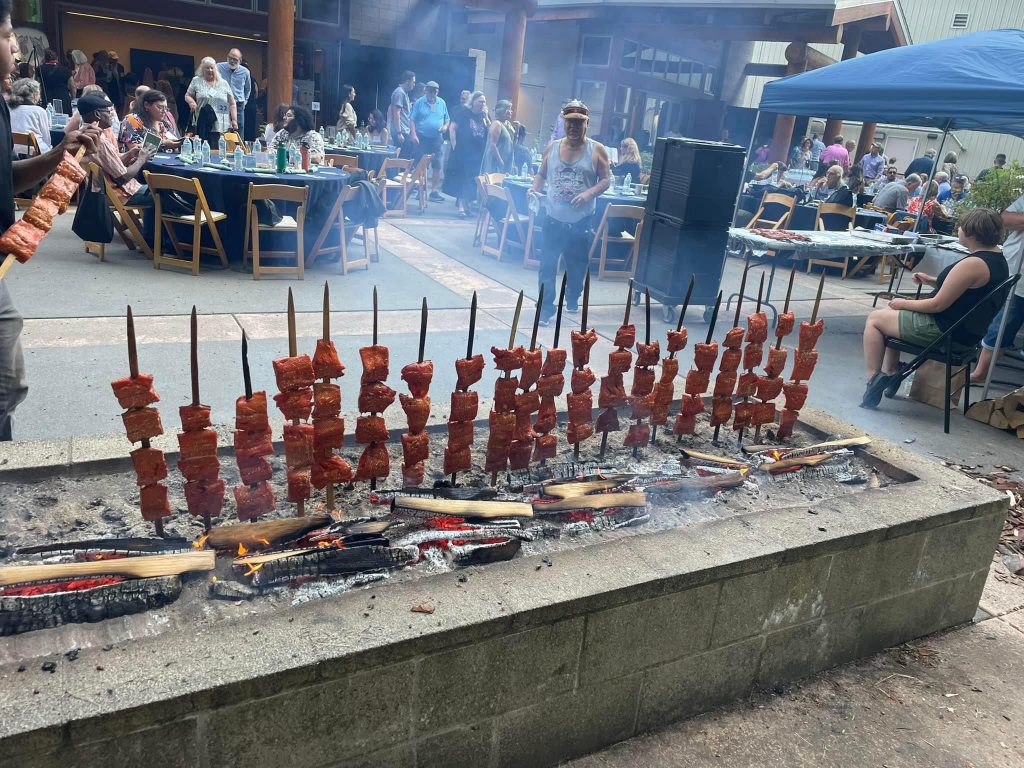
Ryan’s Rez-ipes, renowned for their delicious eats, was the official caterer for the event. And there were 22 sponsorships in total this year. Nicole shared that there were a few new sponsors, who have active contracts with the Tribe, that showed their support to the community including Korsmo Construction, KPFF Engineers, and the Wenaha Group.
While the food was being prepared, the guests were invited to tour the cultural center’s exhibits and gift shop. This was also the time to peruse the items that were up for bid at the silent auction. Rows of tables displayed artwork and regalia that was donated by nearly 30 Tulalip artists. Beside each donation there was an informational note, detailing the art piece and the artist, as well as a sheet of paper where the guests could place their bids.
“It’s always nice to see everybody’s work,” shared Nicole. “One that I loved this year was made by Jose Roja, who is a Tribal youth. He made his first traditional wool skirt and matching headband. Since it was his first one, he’s supposed to give it away, so he donated it to us to put in the silent auction. We actually had several Tribal youth who donated items for the silent auction, that was really cool to see our youth participate and show their support.”
Once the silent auction placed a last call for bids, the event began with an opening prayer by Natosha Gobin and the presentation of colors by the Tulalip Honor Guard. Young Tribal member Lizzie Mae Williams shared a traditional story, followed up by opening remarks from the Hibulb Cultural Center’s Museum Manager, Mytyl Hernandez.
DJ Monie was behind the turntables and helped set the vibe of the soiree throughout the night. As the attendees enjoyed their fresh king salmon dinners, they were treated to a live spoken word and flute performance by Renee Roman Nose and Peter Ali.
From the comfort of their seats, the guests could scan a QR code, where they could donate to a canoe restoration project via their smartphones. They also had the chance to enter in a drawing to win a canvas painting by Tulalip artist, Ty Juvinel.
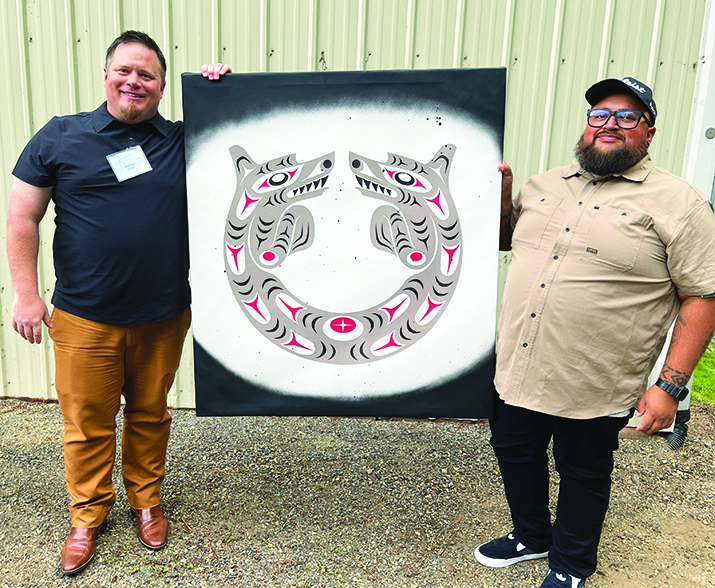
“This is the first year we did a specific fund a project,” said Nicole. “This was a canoe that was donated earlier this year that needs some serious restoration and treatment, it was outside for a very long time. Hopefully it will go on display in the canoe hall. This is a full-sized river canoe, the one in the canoe hall now is actually child sized. This is very similar to what we’d use here along our Snohomish, Stillaguamish, Skagit rivers. And Ty’s donation was great. We decided to use that for our special drawing. We always like to feature something unique for the special drawing. It was a very large print, almost 4ft x 4ft.”
This year’s fundraiser was dedicated in memory of David Spencer Sr., who was an active participant in countless events at the Hibulb Cultural Center for many years, notably at the annual film festival and the salmon bake. And according to Nicole, David also voices the introduction video that plays inside of the cultural center’s longhouse as people tour the museum.
Once everybody collected their winnings, the 2024 Salmon Bake Fundraiser was officially marked as a success in the books.
“I am extremely grateful for everyone’s support from friends, community, tribal partners,” Nicole stated. “Hopefully it means we’re doing our job well and showing them how the cultural center is continuing to serve the community. Every year the funds are going to future exhibitions and programming. Thankfully, the cultural center staff are able to continue to offer events. They just released their September events, and they have a busy schedule. It’s good to see that and hopefully our donors can see that as well.”
For more information, and to stay up to date on the Hibulb Cultural Center’s events, exhibits, and activities, be sure to give their Facebook page a follow. And for addition details about the Tulalip Foundation, please visit www.TulalipFoundation.org.
